Heidesand (German Shortbread Cookies)
This post may contain affiliate links. See my disclosure policy.
A thoroughly authentic Heidesand recipe, these classic German shortbread cookies are made with browned butter that gives them their distinguishing flavor. Delicately crumbly with a melt-in-your-mouth texture, they have remained a favorite throughout Germany during the Christmas holidays for generations!
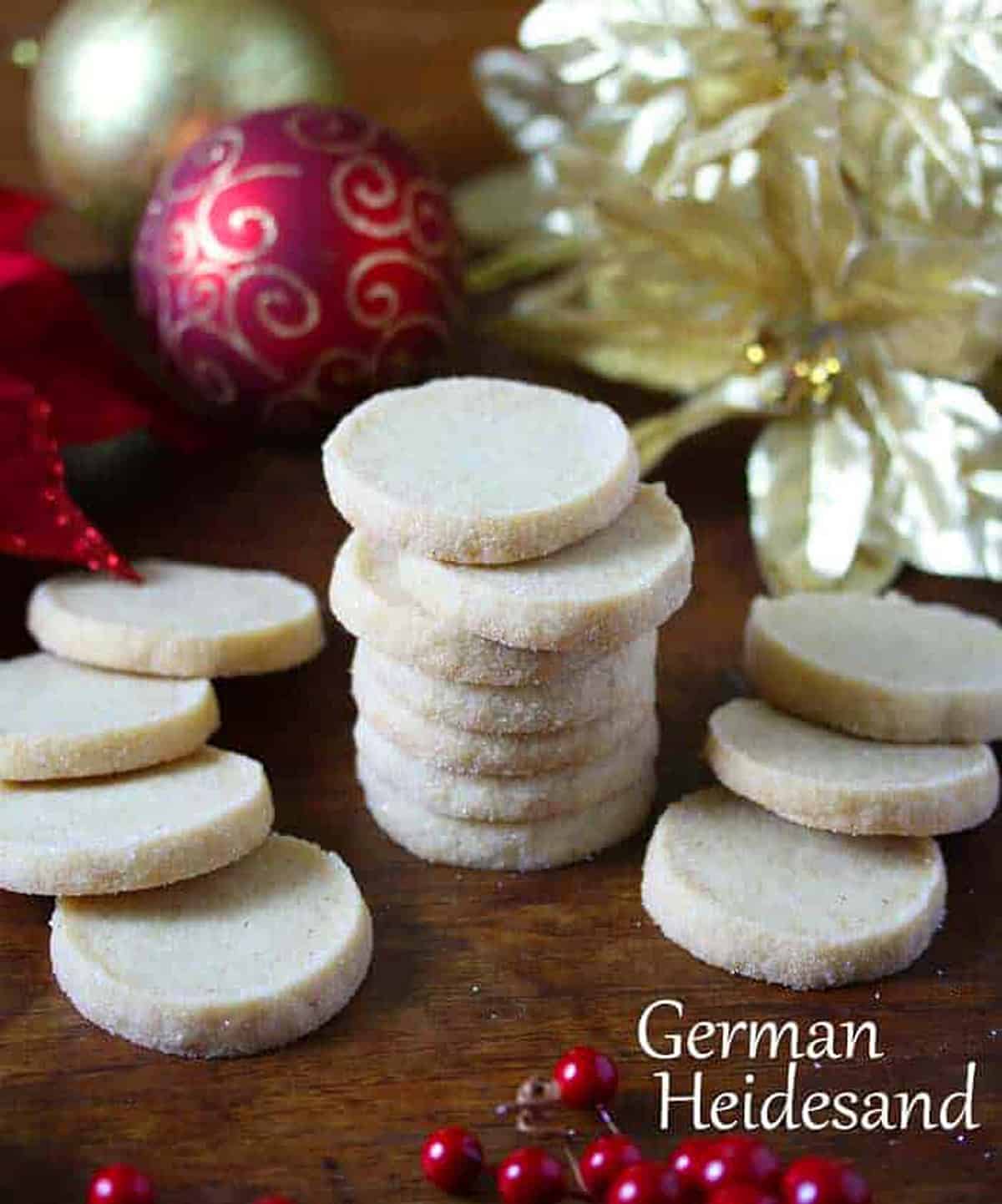
What is Heidesand?
A traditional German Christmas treat, Heidesand are delicious shortbread cookies that are made with browned butter, a feature that gives them their unique and distinguished flavor. A personal favorite, growing up in Germany my Mutti and I made these every Christmas and it has remained a family tradition ever since. (Be sure to check out all of my favorite traditional German Christmas Cookies!)
Pronounced “hi-deh-sund”, it’s an age-old classic German cookie, mostly eaten during the holiday season. Heidesand translates as “heath sand” and has its origins in the Lüneburger Heide, a beautiful heathland area in northern Germany that my family and I loved visiting. The terrain is sandy (the cookies’ namesake) and slightly hilly. In season it is covered in gorgeous purple heather. Most of it is a nature reserve and it is a popular north German tourist site. It also has historic significance, having been cultivated since 3000 BC with over a thousand Megalithic sites from the New Stone Age and early Bronze Age.

Indigenous to the area are the famous Heidschnucke, a north German breed of moorland sheep with big rounded horns. I always got a kick out of saying the name as a kid. “Hyde-shnook-eh”.
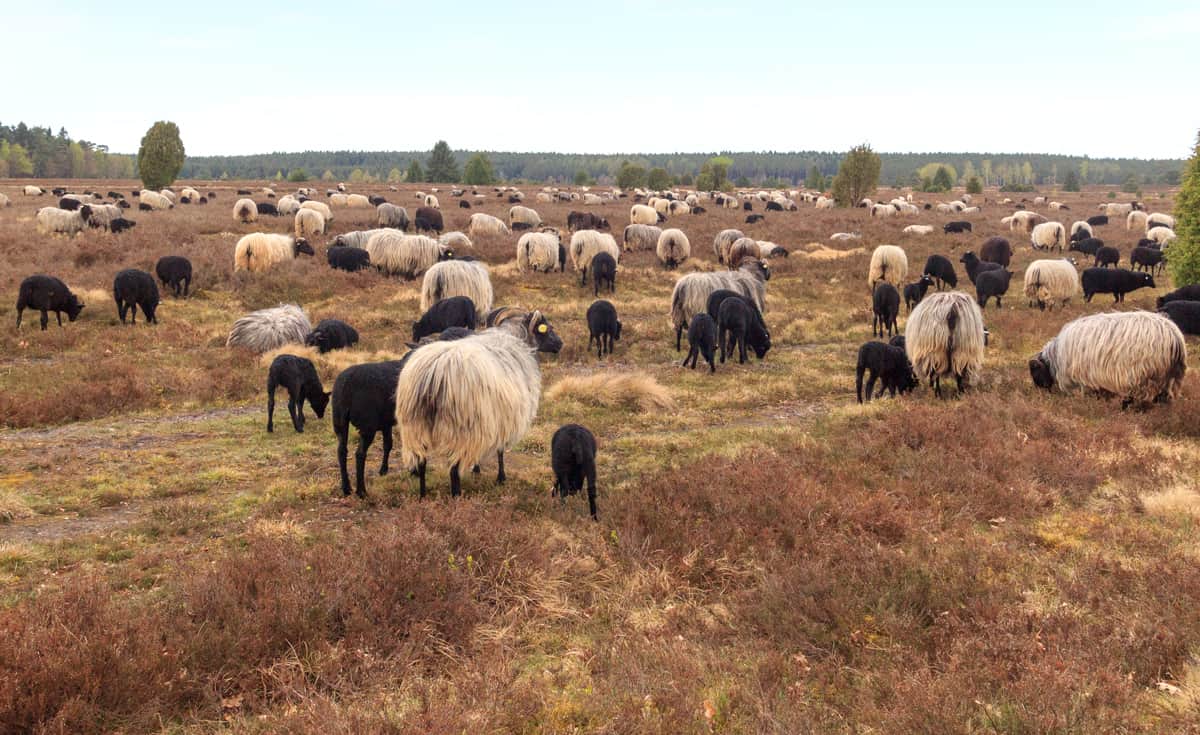
And so from this beautiful region of Germany we have Heidesand, a “sandy” shortbread cookie made with browned butter and enjoyed all over Germany during the Christmas season.
German Shortbread Cookies Variations
I love traditional Heidesand and how such simple ingredients can produce the most wonderful flavor and texture. There are a number of contemporary variations of Heidesand that you can also try, such as including the addition of some finely minced candied ginger, candied orange peel, orange zest, or rosemary.

Heidesand Recipe
Let’s get started!
First let’s brown the butter. Melt the butter in a small saucepan over medium heat. Whisk the butter frequently as it begins to simmer.
The butter will begin to foam and the foam will start to subside. Continue whisking. It’s very easy for browned butter to become burnt very quickly, so keep an eye on it. Browned specks will begin to form on the bottom of the pan, emitting a lovely nutty aroma.
You want browned butter that is rich in color for the full flavor benefit. As soon as it becomes a rich brown, remove it from the heat to prevent it from burning. Let the browned butter cool completely.
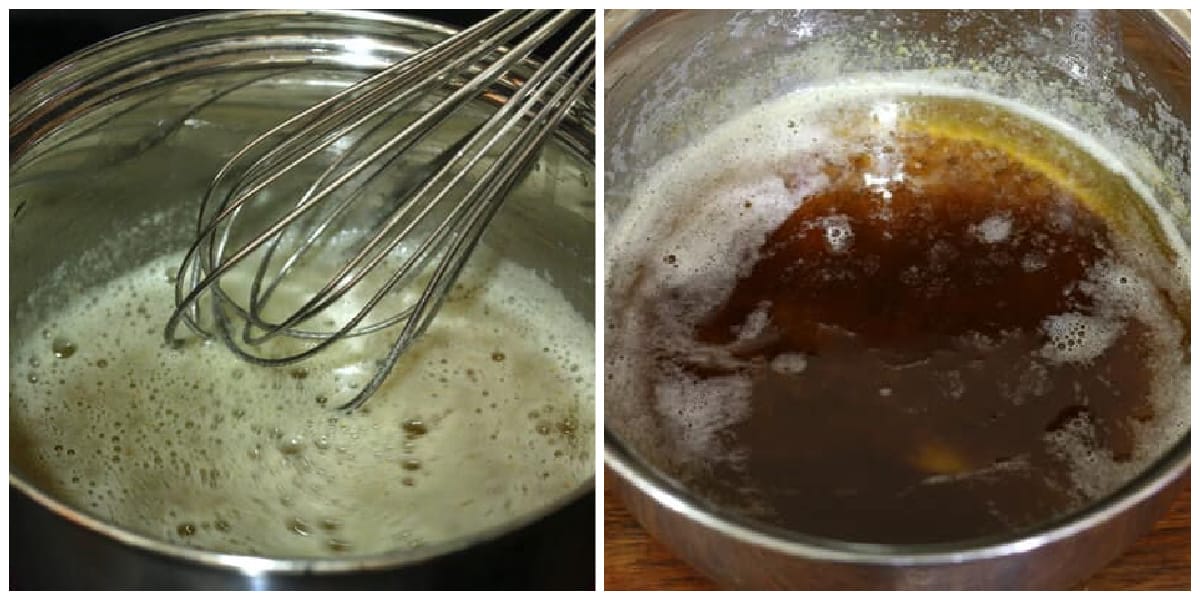
Once cooled, add the browned butter to a mixing bowl and beat until frothy.
Add the sugar, milk and vanilla extract and beat until combined.

In a separate bowl, combine the flour, baking powder and salt.
Add the flour mixture to the butter mixture and beat until the mixture resembles coarse sand.
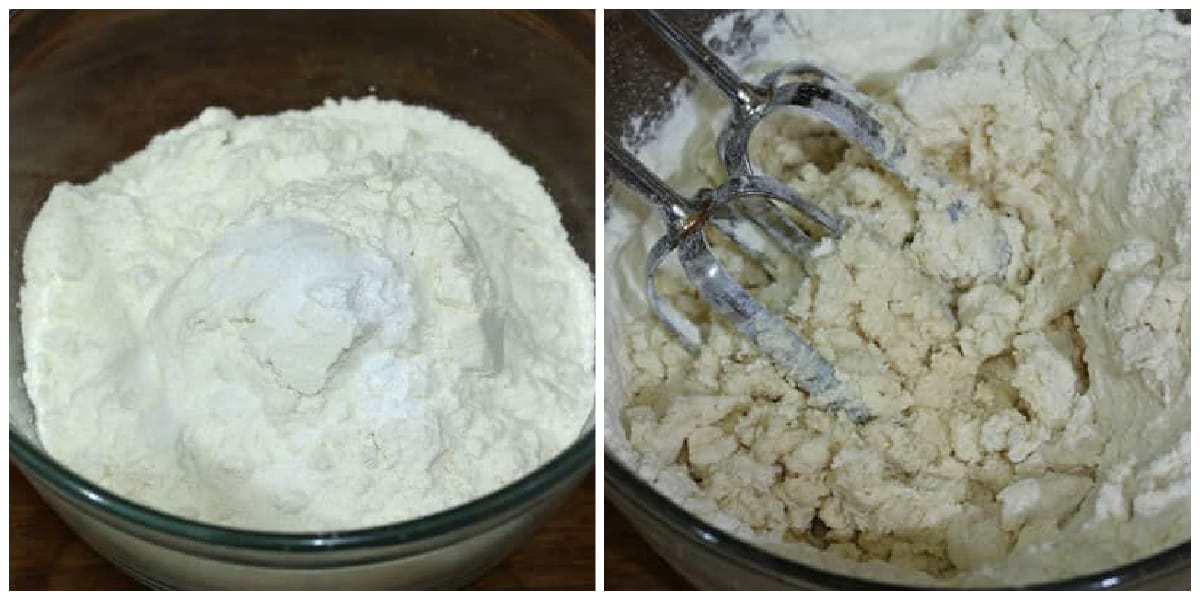
The mixture will be very dry.
Use your hands to form the crumbs into a mass of dough. The dough will be very dry and crumbly and that’s how it should be. It will just barely stick together, some parts of it breaking off. It is a bit challenging to work with but the crumbly dough is what ensures the best shortbread texture.
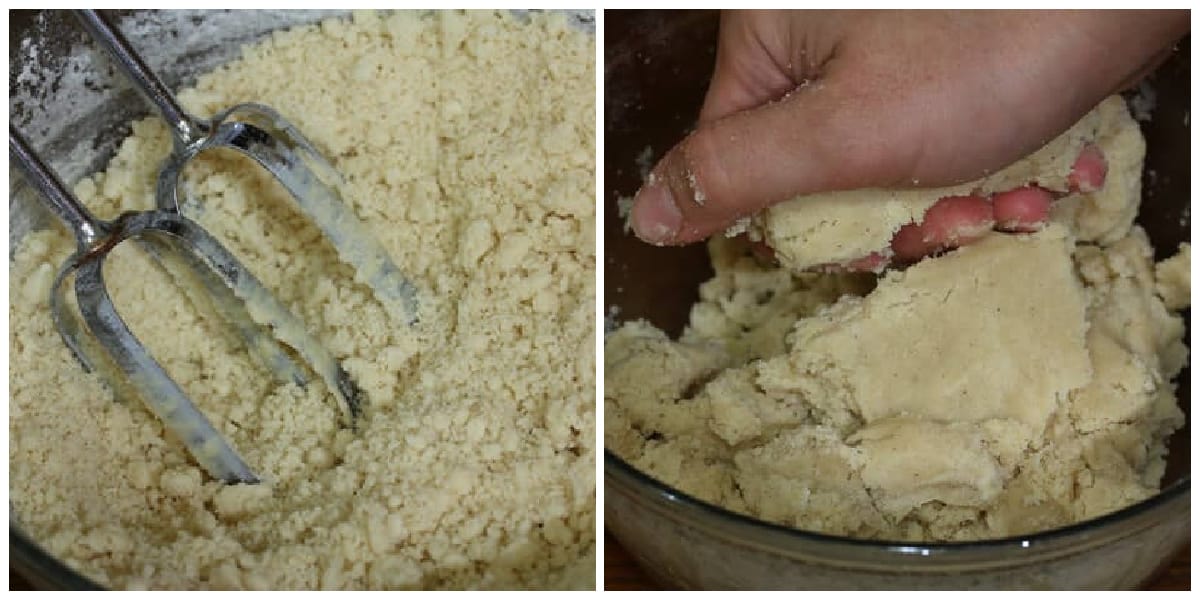
Transfer the door to a clean work surface and squish the dough together to form two logs about 1 inch in diameter. Again, the dough is dry and will take some squishing and re-squishing to get it to stay together. Don’t worry about that, once it’s chilled it will stay together.
Wrap the logs up in plastic wrap and refrigerate overnight.
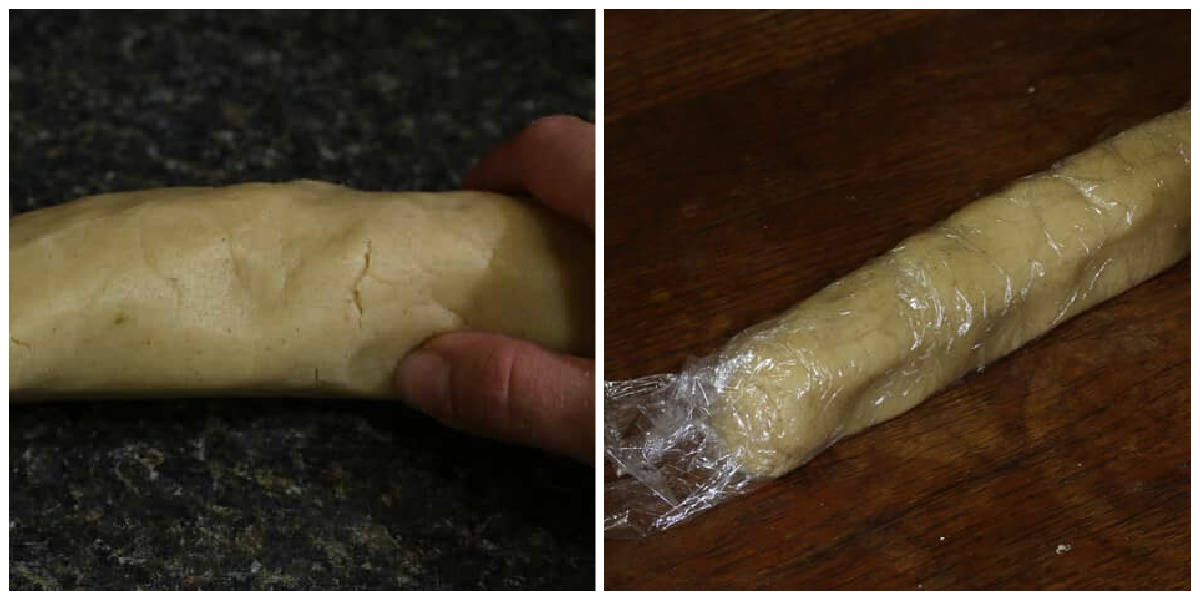
Cut the chilled dough into 1/4 inch rounds.
Traditionally the cookies are often rolled in Hagelzucker (in English, pearl sugar), very coarse and opaque chunks of sugar that don’t melt under baking temperatures. They add a nice decorative touch. I couldn’t find my stash while I was making these so had to make do with regular sugar.
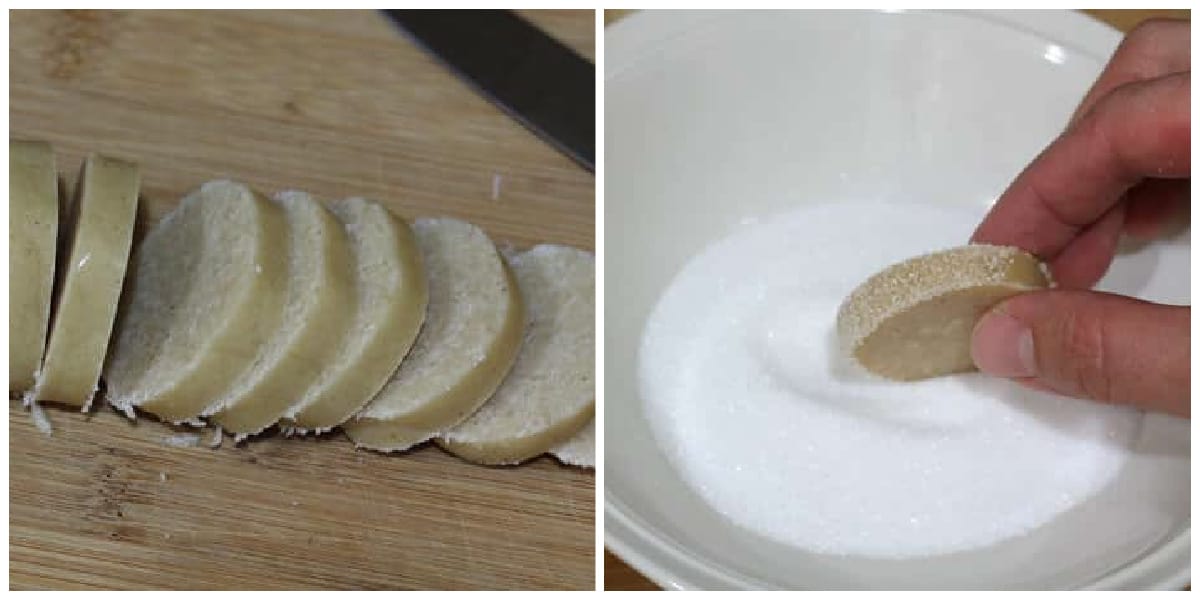
Time to bake them. In an oven preheated to 350 degrees F, bake them for about 15 minutes, rotating the pan halfways through to ensure even baking, until the edges are just barely starting to turn golden.
Let the cookies sit for a couple of minutes on the baking sheet before transferring them to a wire rack to cool completely.
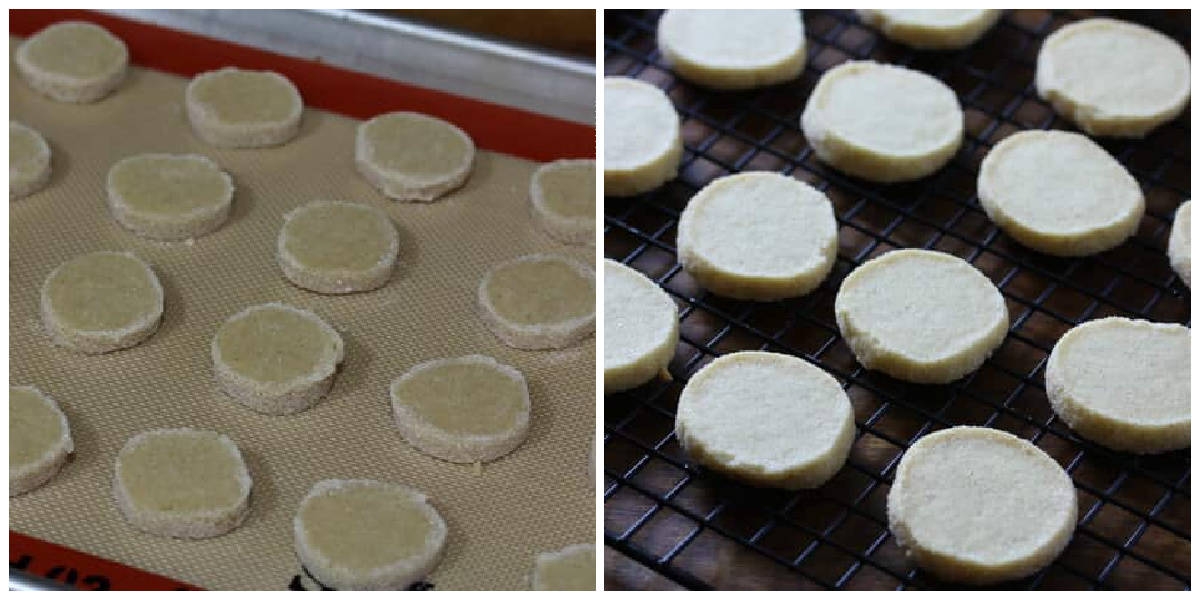
Enjoy!
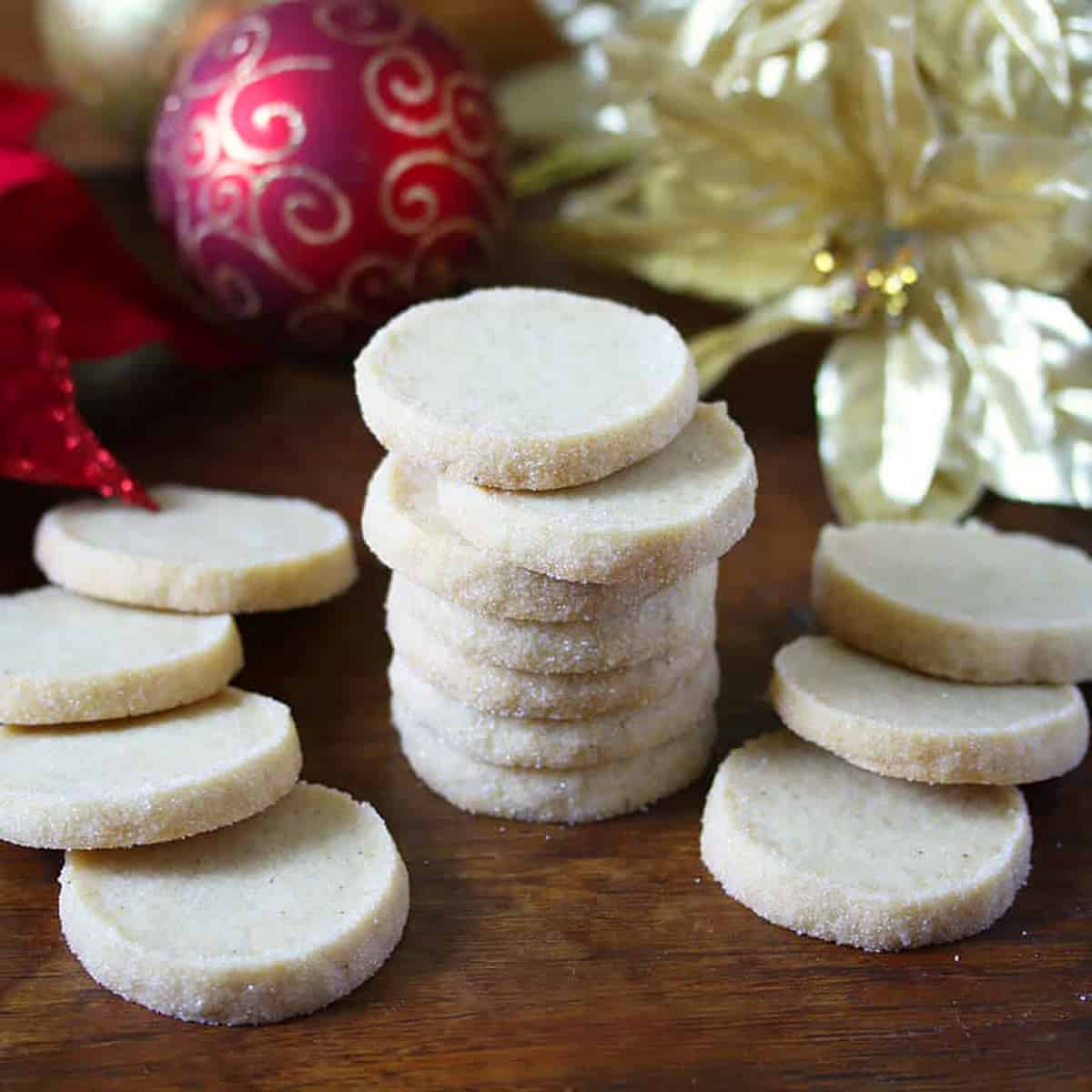
For more traditional German Christmas goodies try my:
- Stollen
- Pfeffernüsse
- Lebkuchen
- Springerle
- Engelsaugen
- Gugelhupf
- Printen
- Magenbrot
- Spitzbuben
- Speculoos
- Vanillekipferl
- Zimtsterne
- Bethmännchen
- Berliner Brot
- Marzipan
- Marzipankartoffeln
Save This Recipe
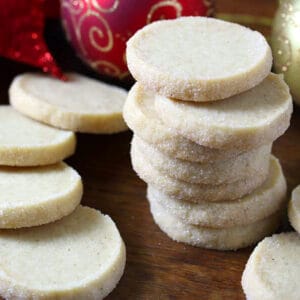
Heidesand (German Shortbread Cookies)
Ingredients
- 2 sticks unsalted butter , (1 cup)
- 1 cup white granulated sugar
- 2 tablespoons milk
- 1 teaspoon quality pure vanilla extract
- 2 1/4 cups all-purpose flour
- 1/2 teaspoon baking powder
- 1/4 teaspoon salt
- Pearl sugar for rolling
Instructions
- Melt the butter in a small saucepan over medium heat, whisking frequently as the butter comes to a simmer (simmer, not boil). Browned specks will appear at the bottom of the pan. Whisk constantly until the the butter reaches a rich brown color. Note: The butter will burn very quickly at this stage so be careful. Once the butter is a rich brown at the bottom of the pan, remove from heat and let cool completely.Once cooled, pour the butter in a large mixing bowl and beat until frothy. Add the sugar, milk and vanilla extract and beat until combined.
- In a separate bowl, combine the flour, baking powder and salt. Add the flour mixture to the butter mixture and beat until the mixture resembles coarse sand.Use your hands to form the mixture into a mass. The dough will be very dry and brittle, this is normal (though a bit challenging to work with) and is what ensures a delicately crumbly shortbread. Turn the dough out onto a clean work surface and squish the dough to form two logs about 1-inch in diameter. The dough will be crumbly, keep working at it to form the logs (see pictures in this post for reference). Wrap them in plastic wrap and refrigerate overnight.
- Preheat the oven to 350 degrees F.Slice the chilled dough into 1/4 inch thick rounds. Roll the edges of each cookie in pearl sugar and place on a lined cookie sheet. Bake for about 15 minutes, turning the cookie sheet around halfway into it to ensure even baking. Bake until the edges of the cookies are just barely beginning to turn golden. Let the cookies sit on the cookie sheet for a couple of minutes before transferring them to a wire rack to cool completely. Store in an airtight container.
Nutrition
Originally published on The Daring Gourmet December 8, 2014



















The cookies are super delicious! I suspect that some of the problems people are having with crumbling has to do with how the flour is measured: dipped, scooped, spooned or weighed. Some say that a cup of flour weighs as much as 5 ounces, others say it’s as little as 4¼ ounces! So for the 2¾ cups called for in the recipe, if cooking by weight that means a range of 11.6875 to 13¾ ounces, a huge difference when it comes to baking. I’d be interested to know how the flour was measured in the recipe, and I think those who reduced the amount by a quarter cup are on the right path.
Hi Winston, thanks so much, I’m glad you enjoyed them! You’re absolutely right. Most recipes are more forgiving if measurements are a little off but too much flour would make this dough – since it’s already supposed to be dry to begin with – even drier and harder to work with. Thanks for your feedback about cutting down the flour by about 1/4 cup.
This recipe is a winner! The dough was a little crumbly but overall was amazing. I have to say I will be making these in the near future!
Awesome, Lila, I’m so glad to hear it, thank you!
Do they cookies need to be in the fridge overnight before they’re baked or will a few hours do?
Hi Natasha, I strongly recommend chilling them overnight for the sake of both texture and flavor.
This is a fantastic recipe and they turned out just so delicious with wonderful texture. I am making these for a farewell luncheon for a a German co-worker and I am so excited to see what she says about them!
For those struggling with the dough texture, I have a few recommendations:
1) use the metric measurements provided and weigh your flour – it is very easy to compact flour in a cup measure and use too much without ever knowing it!
2) use a silpat to manipulate your dough before transferring to plastic wrap – it is a more even surface than your hands and you will compact every crumb into that log, I promise!
3) make these on a humid day. The flour with absorb moisture from the air making it easier to roll the log without changing the recipe amounts.
4) when slicing, use a large, sharp, chef’s knife and cut straight down with one smooth motion. A knife that is too small, or serrated, or any ‘sawing’ motion may cause crumbling while slicing these up.
Sincerely,
A pastry chef
Fantastic, Madeleline, I’m so glad you enjoyed these, thank you! Thanks also for these awesome tips!
Thank you for this wonderful recipe! My first batch just came out of the oven and they are absolutely delicious! I added a little candied orange peel to mine and used 1/4 cup less flour and had no trouble with the dough crumbling. I look forward to trying other variations with the addition of rosemary or ginger.
Fantastic, Alisa, I’m so glad you enjoyed them and those flavor additions sound delicious!
I’m helping my son make these for German class for extra credit and I used almond flour 3/4 cup and the rest with all purpose. Can’t wait to see how they will end up tasting, they smell delicious
Fantastic, Amy! These should certainly win him some extra credit :) I’ve never tried these with part almond flour and am now sure how well they will stay together without crumbling apart. Please let us know how they turned out.
I just made my first batch of these and they are SO GOOD! Thank you for this wonderful recipe and excellent instructions!
These turned out WONDERFULLY! Delicious flavor and texture, thank you!